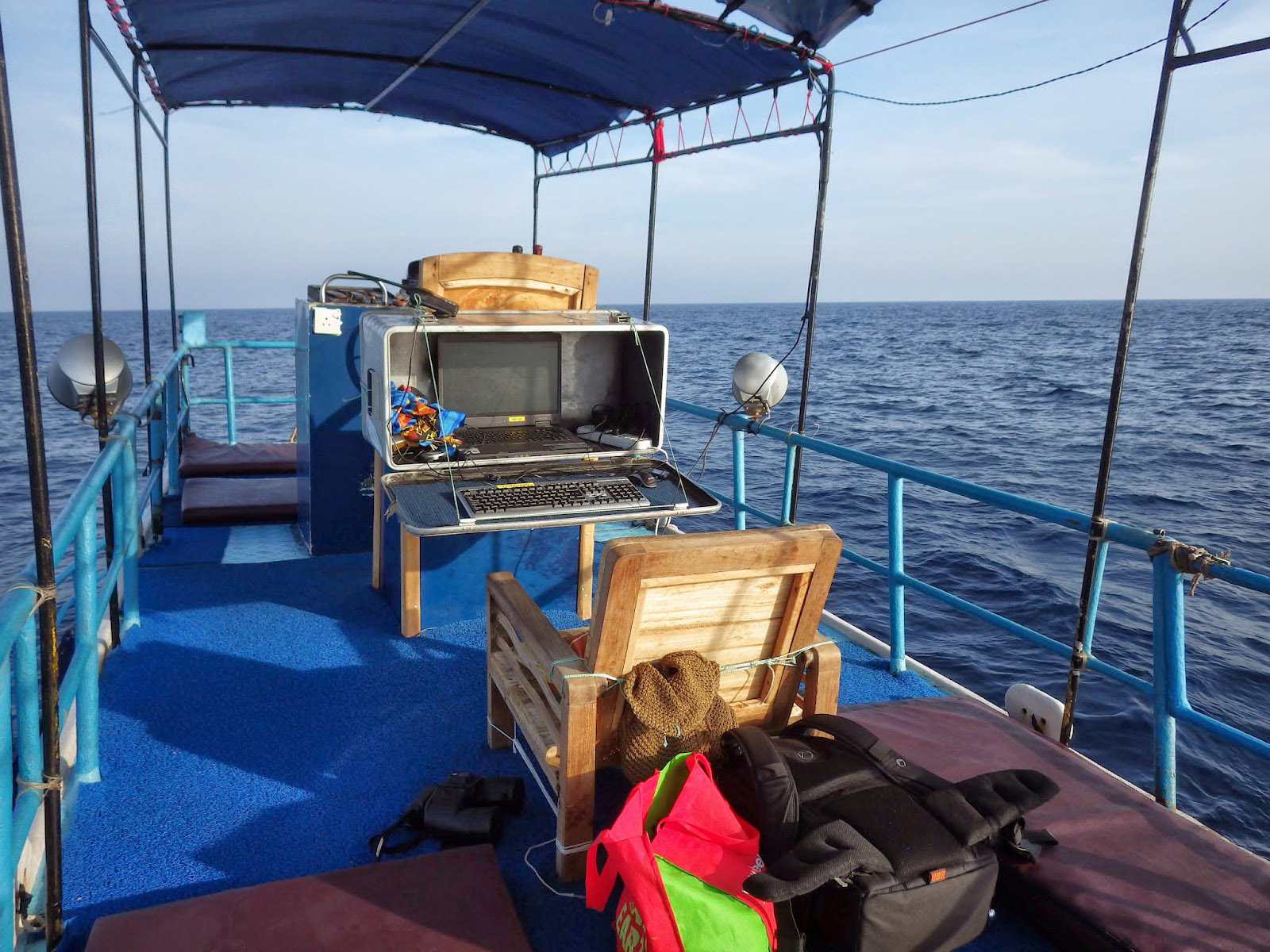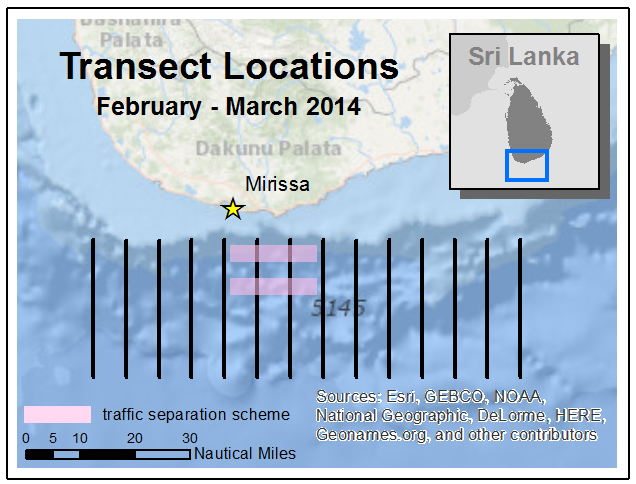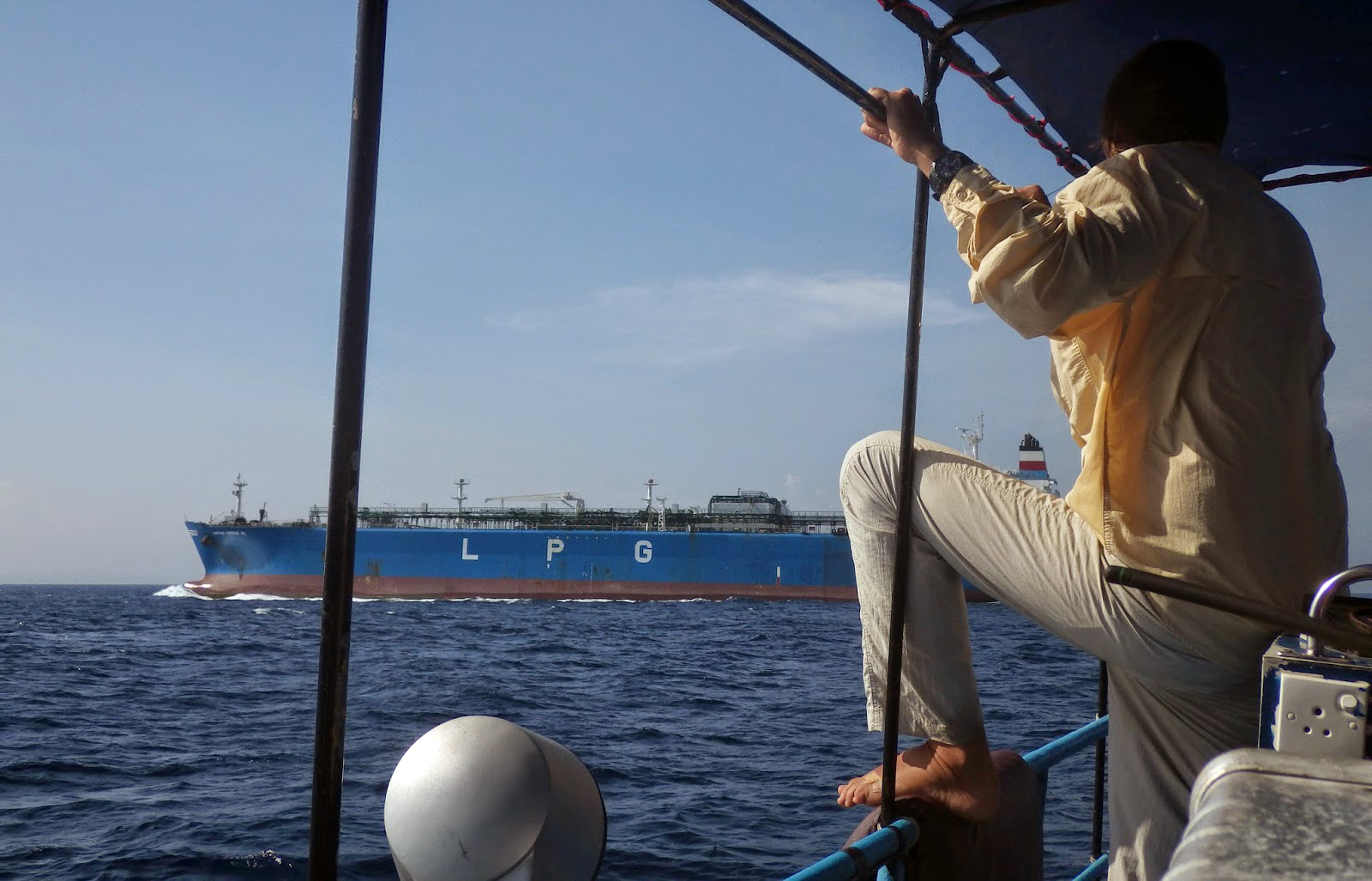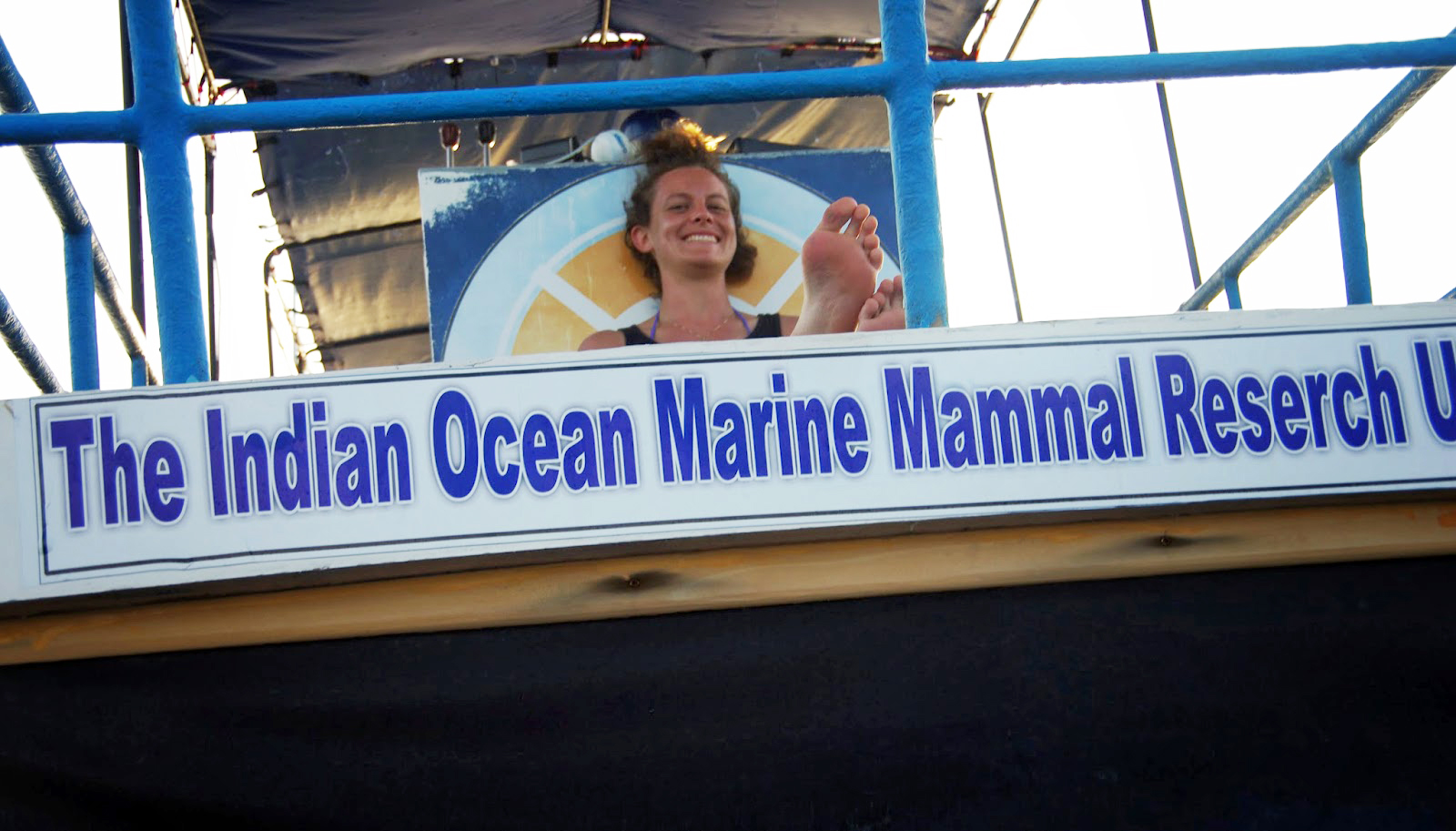Article by Geography graduate student Kitty Currier, 9 April, 2014:
Few office environments can compete with the vista and ambiance of Queen of Blue Whales. This 13 m fishing-turned-whale-watching boat/research vessel recently served as a platform for cetacean surveys off the southern coast of Sri Lanka. For a few days I was lucky enough to participate, trading my office in Ellison Hall for a desk bobbing up and down on the Indian Ocean.
The six-day transect cruise was part of an ongoing study to understand the spatial distribution of whales relative to shipping lanes that bring a constant stream of traffic through the area. Collaborators on the study come from the local whale-watching business Raja and the Whales, the non-profit organizations Biosphere Foundation and International Fund for Animal Welfare, University of Ruhuna’s Faculty of Fisheries and Marine Sciences and Technology, and the University of St. Andrews’ School of Biology.
Six of us were on board to conduct this phase of the study—Captain Raja and two crewmembers of Raja and the Whales, and Abigail Alling, Mark Van Thillo, and myself representing Biosphere Foundation. Our research boat, Queen of Blue Whales, was outfitted with an in-line hydrophone array, depth sounder, GPS receivers and two data-logging laptops. We completed two 25 nm transects per day, starting by 0700 and finishing around 1600. Two observers and one helmsman scanned the surrounding sea for whales, dolphins, fishing boats and gear, ships, and plastic while one recorder entered their observations at the deck laptop station. Pygmy blue whales were our most frequently sighted cetacean, with an average of 20 logged per day. Also sighted were Bryde’s whales, numerous spinner dolphins, false killer whales, and a few striped dolphins.
Crossing the shipping lanes required finesse with our 300 m-long hydrophone array in tow. It’s easy to see how commercial ships cruising at 20 kn or more pose a hazard to whales feeding, resting or traveling near the ocean’s surface. Combined with long-line fishing boats and gear, abundant at the perimeter of the shipping lanes, these vessels create a veritable obstacle course for passing sea life.
Captain Raja has been documenting the location and circumstances of his cetacean sightings since starting his whale-watching company five years ago. In his data are descriptions of 20, 40, and even 100 whales appearing at a time. Orcas, humpbacks, and sperm, fin, and sei whales are regular visitors to these waters in addition to the blues and Bryde’s we observed during the survey. For obvious reasons, whale watching has become a lucrative part of the tourism industry of Mirissa, the small coastal town where many of the companies are based. In Raja’s notes are accounts of up to 20 whale-watching and dive boats surrounding a single animal. Many tour operators fail to respect international guidelines for responsible whale watching, a problem compounded by the high intensity of boats competing for business.
Filed away in Raja’s data is a section on dead whale sightings, a depressing reminder that not all encounters are pleasant. In the past few years, the success of Mirissa’s whale-watching industry has both expanded local tourism and attracted government attention. However, the ongoing problem of ship strikes combined with pressure from an increasing number of whale-watching boats ironically pose threats to the animals that spawned the industry in the first place.
These worries are real yet seemed far away as I enjoyed the rare opportunity to watch blue whales surfacing all around us during the survey. More immediately pressing was the threat of being launched from my chair with each big swell while typing on the deck of Queen of Blue Whales. Big challenges lie ahead for the wildlife—and humans—who frequent these waters, but with people like Raja, whose passion for whales drives his business practices and desire to facilitate marine research, my outlook is positive.





